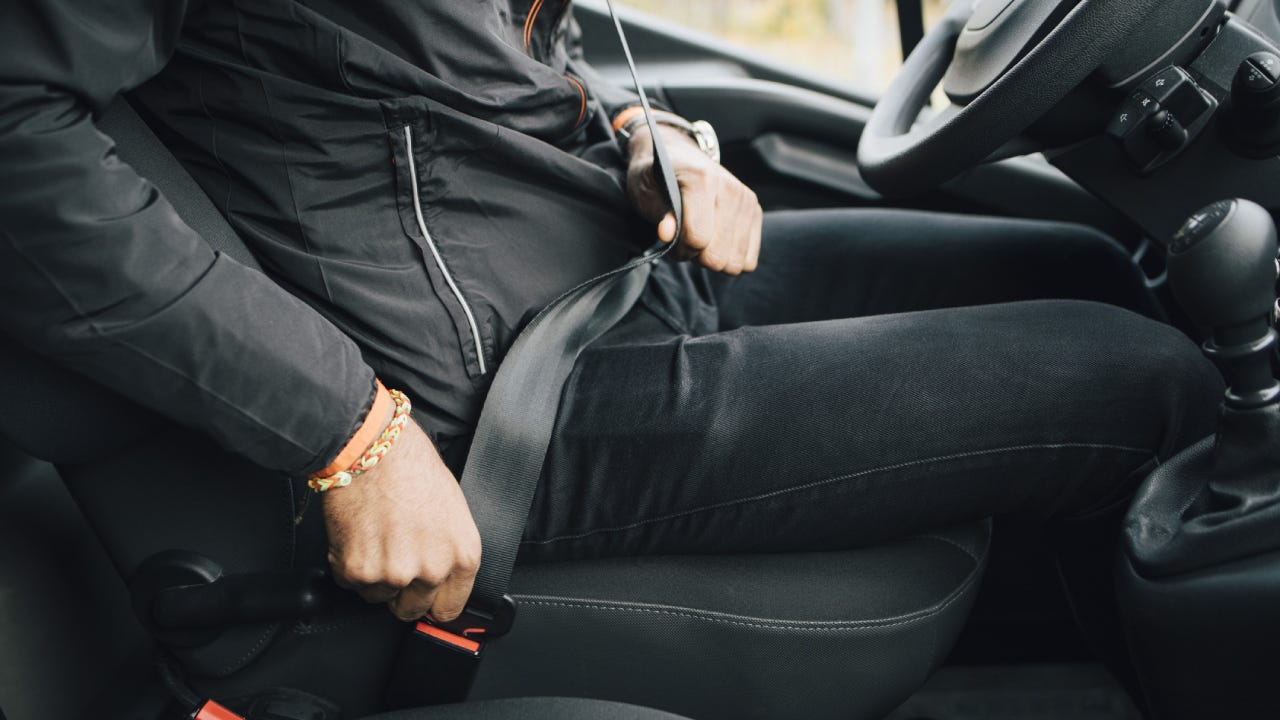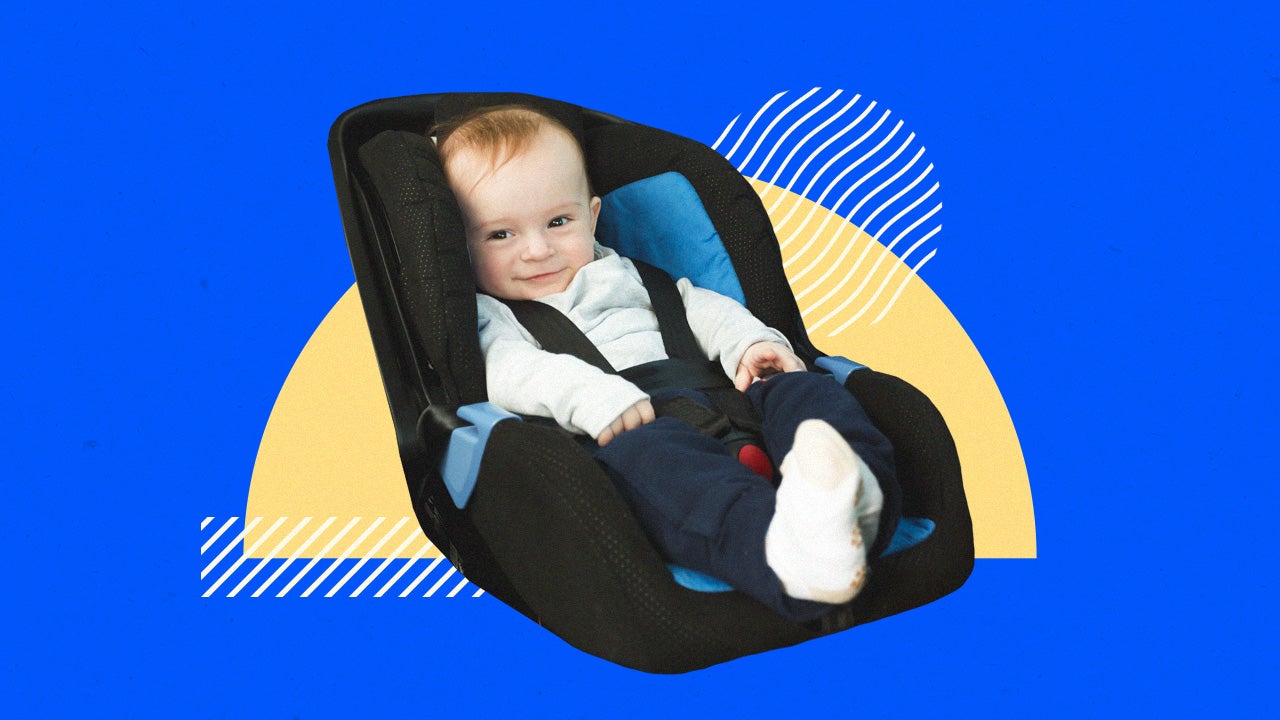Seat belt safety: 2024 facts & statistics

As of 2023, seat belt use is at an all-time high in the United States with nearly 92 percent of front-seat passenger vehicle occupants using seat belts during an average daylight trip. However, failure to buckle up still contributes to a high number of fatal accidents each year. Shortcomings in vehicle design, consumer beliefs about seat belt use and enforcement of seat belt laws all limit the effective adoption of seat belts in private passenger vehicles.
Seat belt statistics
Seat belt use is on the rise according to recent data, but there’s still work to be done to reduce fatalities.
- According to the National Highway Traffic Safety Administration (NHTSA), 91.9 percent of front-seat passengers used their seat belt during daytime trips in 2023. That’s an increase of 0.3 percentage points from 2022 and 4.7 from 2013. (NHTSA)
- In 2017, 14,955 lives were saved by seat belt use, but an additional 2,549 could have been saved by more extensive use. (NHTSA)
- The leading cause of death for Americans aged 1 to 54 is motor vehicle crashes.
- Of the 26,325 passenger vehicle occupants killed in 2021, over 50% were not wearing seat belts. (Center for Disease Control – CDC)
- Among drivers and front-seat passengers, seat belts reduce the risk of death by 45 percent in a passenger car and 60 percent in a pickup truck. (CDC)
- Non-fatal injuries from motor vehicle accidents cost Americans $220 billion in medical bills, loss of quality of life and lost wages in 2021. (NHTSA)
- Passenger vehicle occupants are less likely to wear seat belts in light traffic, on surface roads, in states without primary enforcement laws and/or in pickup trucks. (NHTSA)
- As of 2022, Iowa and Hawaii boast the highest seat belt use at 95.9 percent, while Virginia has the lowest belt use rates at 75.6 percent. (NHTSA)
- The South was the only census region that saw a decrease in seat belt use in 2023, from 90.5 percent to 88.4 percent. (NHTSA)
- Of men and women who died in motor vehicle crashes in 2021, 54 percent of men were not wearing seat belts compared to just 42 percent of women. (NHTSA)
As the NHTSA’s annual Click It or Ticket visibility campaign emphasizes, seat belt use is still an important part of responsible vehicle use. Bankrate’s insurance editorial team analyzed the data to find key insights for drivers in 2024.
Seat belt safety facts
Seat belt use doesn’t just save lives — nearly 375,000 from 1975 to 2017, according to NHTSA — it also reduces injury risk. By minimizing crash injuries, seat belts can help drivers avoid the cascading costs associated with a serious motor vehicle crash, from hospital bills and insurance rate hikes to lost wages and diminished quality of life.
Front seat belt use decreases the risk of fatal injuries by 45 percent and the risk of moderate to critical injury by 50 percent for passenger car occupants. If you’re riding in a pickup truck, your risk of death goes down by 60 percent and your risk of injury goes down by 65 percent when you wear your seat belt.
Seat belts aren’t just important for front-seat passengers and drivers — and the risk isn’t just to the unbelted individual. Although a 2019 study by the CDC found that Americans believe rear seat belt use is less important than front seat belt use, the presence of an unbelted rear passenger increases the risk of driver fatality by 137 percent according to the Insurance Institute for Highway Safety (IIHS).
To avoid these risks, follow the guidelines issued by the NHTSA for proper seat belt use:
- Place the lap belt across your hips: Don’t put it over your stomach, as this increases injury risks.
- Place the shoulder belt across the center of your chest: Don’t put the belt behind your back or over your neck.
- Check to see if your child is ready for a seat belt: When your child outgrows the recommendations for booster seats, they should be ready to use a seat belt.
- Continue using your seat belt when pregnant: The NHTSA has detailed guidelines for safe seat belt use during pregnancy.
Although there is an argument made that there are some deaths caused by seat belts, much of the data prepared by the NHTSA and CDC indicates that there is a much higher risk of death during a serious accident for those who are not wearing seatbelts.
Risk factors for decreased seat belt use
Research by the NHTSA found that while seat belt use is up across the board, certain factors can decrease the likelihood of passengers and drivers wearing a seat belt.
Seat belt laws by state
Each state has its own laws that govern the rules and penalties for both seat belt use and child seat use; the IIHS has rounded up the most current information about these laws.
How driving without a seat belt impacts car insurance rates
Many states consider a seat belt infraction a moving violation. While non-moving violations usually have no impact on your car insurance, a moving violation can cause your car insurance premiums to increase since your driving record is an important rating factor for auto insurance.
It typically increases your premium by around 10 percent, but the exact increase will vary based on your car insurance company. Increases for this type of violation are typically significantly less than those associated with more severe violations, such as reckless speeding or drunk driving, and your seat belt violation could even be forgiven if you have a history of being a safe and responsible driver.
Failure to follow seat belt laws can also cause your insurance rates to go up due to claims. Not wearing a seat belt increases your risk of serious injury or death, which could lead to inflated medical and insurance costs.
What you can do to improve seat belt usage
In addition to using your seat belt, there are some things you can do to promote the widespread use of seat belts.
- Encourage teens. In 2021, nine out of 10 teen passengers who died in a motor vehicle accident were unbuckled. While peer pressure, forgetfulness and a youthful sense of invulnerability discourage teen seat belt use, consistent modeling by parents is one of the best measures to promote seat belt use by teen drivers and passengers.
- Require anyone riding with you to wear their seat belt. Your car, your rules. Ensure everyone’s safety by always requiring all your passengers to buckle up when you are behind the wheel. If you’re not the driver, you can still encourage all passengers and the driver to wear their seat belt, too.
- Find the right fit. Not all seat belts will fit everyone comfortably. You’re less likely to use your seat belt when it isn’t comfortable, so take a proactive approach. Be sure to check the fit of the seat belts before purchasing a new car, and purchase a seat belt adjuster or an extender if you need a more custom fit.
- Adjust for pregnancy. When you are pregnant, it’s that much more critical for you to wear a seat belt so you can protect not just yourself but your baby, too. Women should still wear a seat belt when they are pregnant, but you can talk to your doctor regarding the most comfortable fit for you.
- Advocate for better legislation. Studies show that states with primary laws experience higher seat belt use rates, achieving rates as high as 92 percent. By comparison, states without legislation achieve just 83 percent compliance. It makes a case for expanded and continued legislation across all 50 states and U.S. territories.
- Look for a car with excellent seat belt reminders. Effective seat belt reminders reduce the chance of driving unrestrained. NHTSA has proposed an expansion of the requirement for manufacturers to include seat belt reminders for both front and rear seats in new vehicles.
Never assume that your trip will be the exception to the rule that seat belts save lives. Most fatal crashes take place within 25 miles of home and at speeds of less than 40 miles per hour according to NHTSA — so buckle up no matter what.
You may also like


Teen driving facts and statistics

Car and booster seat facts and statistics



